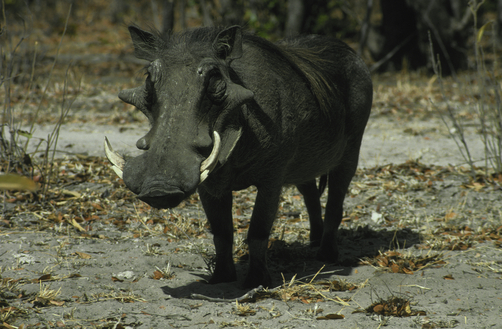Warthogs do not have a wart virus.
- ‘Warthogs’ are sometimes called ‘common warthogs,’ and are known as the ‘pig of the plains’ or ‘vlakvark’ as the Afrikaans call them.
- Warthogs are scientifically known as ‘Phacochoerus africanus’, and are from the family Suidae, the family of pigs.
- Warthogs are native to sub-Saharan Africa, and are usually found in their natural habitat of grassy plains and wooded areas.
- Warthogs grow to be 0.9 to 1.5 metres (3.0 to 4.9 feet) in height and weigh 45 to 150 kilograms (99 to 330 pounds) depending on the gender.
- Warthogs have four ivory tusks that curve from the mouth at a 90° angle that they use for digging, fighting or for defence against predators such as humans who hunt them for their meat and tusks, hyenas, leopards, lions and crocodiles.
Warthog
Image courtesy of National Geographic
- Warthogs have four ‘warts’ or bumps on their face, that are said to be used as fat reserves and for protection.
- Warthogs typically have a thin fur coat in black and brown colours, and birds often sit on their backs to eat the small insects that can be found on the mammal.
- Warthogs have a diet that mainly consists of grass and other vegetation, various fruit and berries, and insects, although sometimes they are meat eaters.
- Warthogs are more likely to run away than fight, and can run up to 48 kilometres per hour (30 miles per hour).
- Warthogs generally breed during seasons of wet and rain, giving birth to piglet litters from two to four, although a greater number are sometimes born.
Bibliography:
Warthog, 2014, National Geographic, http://animals.nationalgeographic.com.au/animals/mammals/warthog/
Warthog, 2014, Wikipedia, http://en.wikipedia.org/wiki/Warthog







